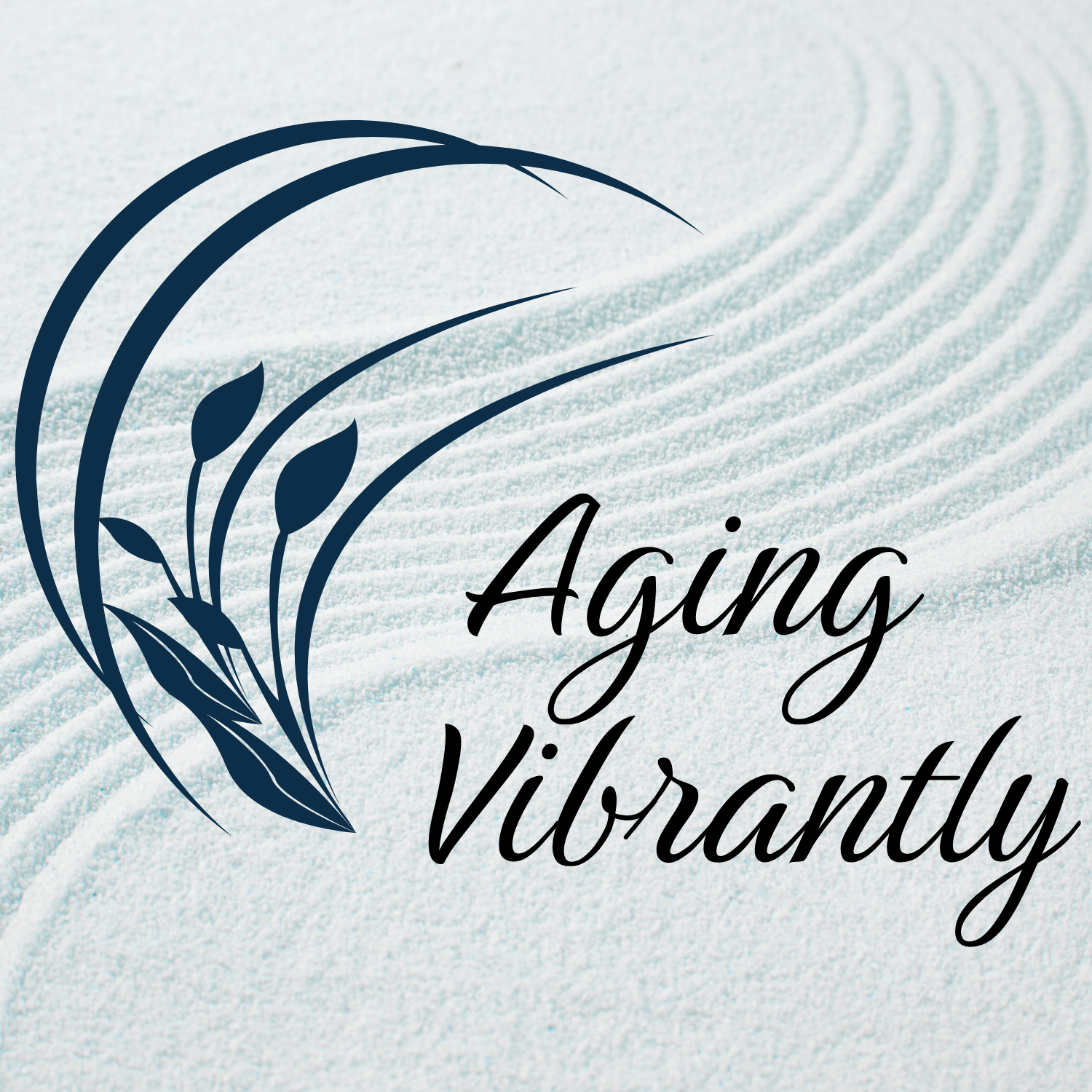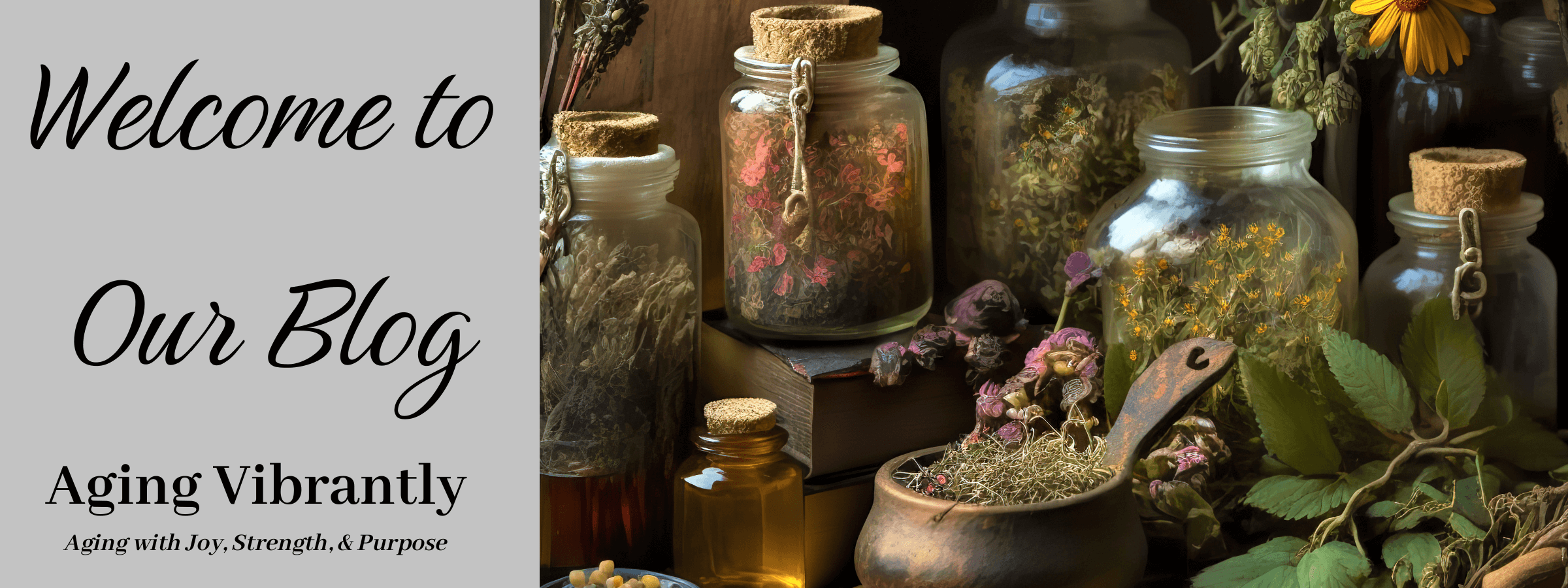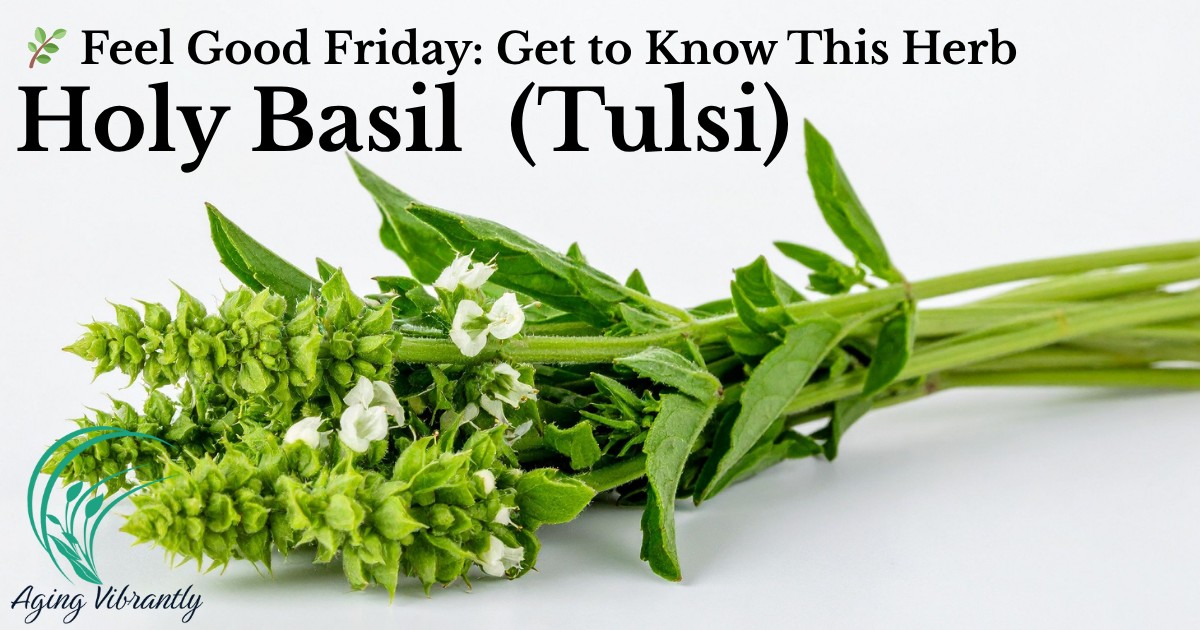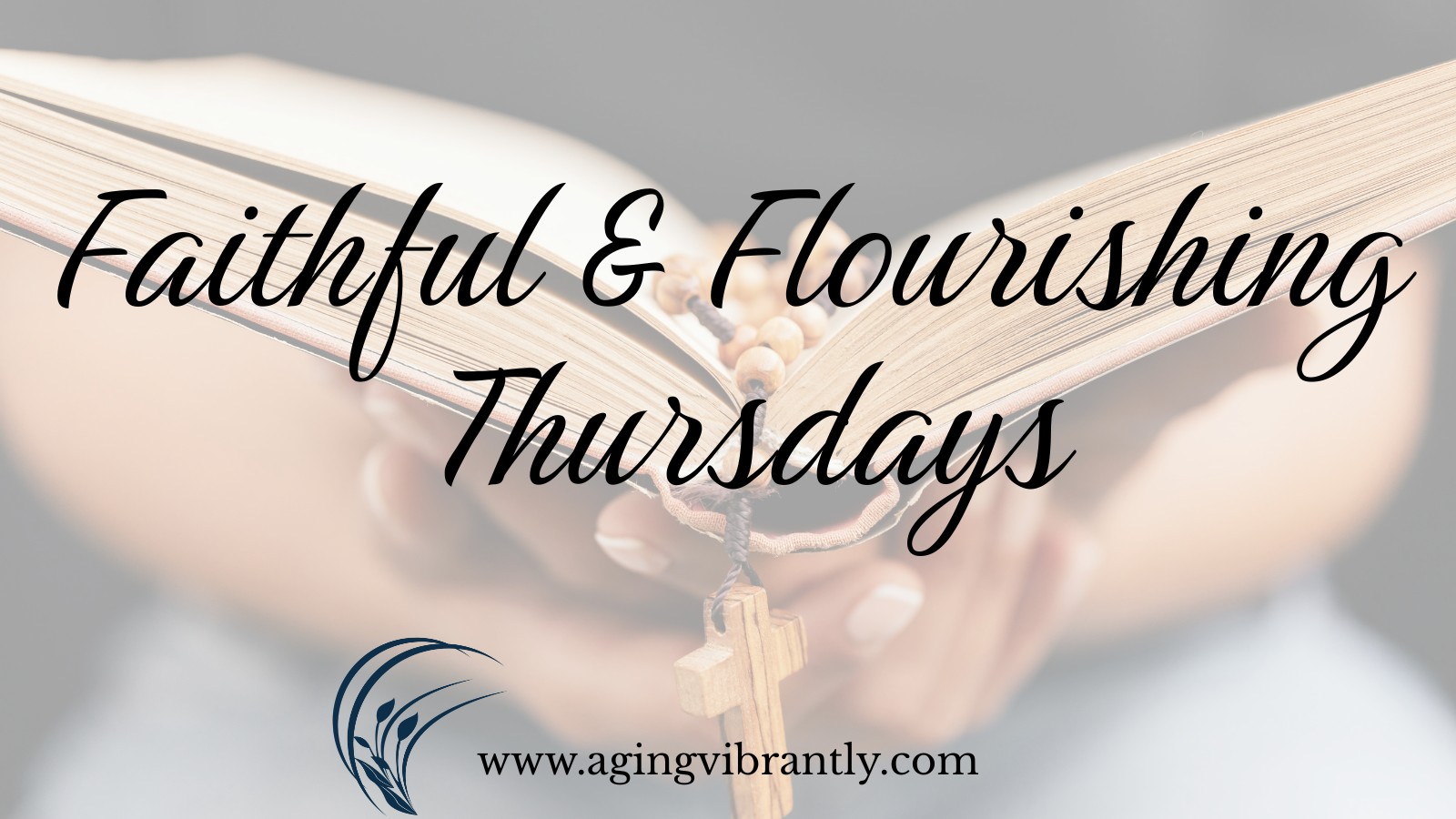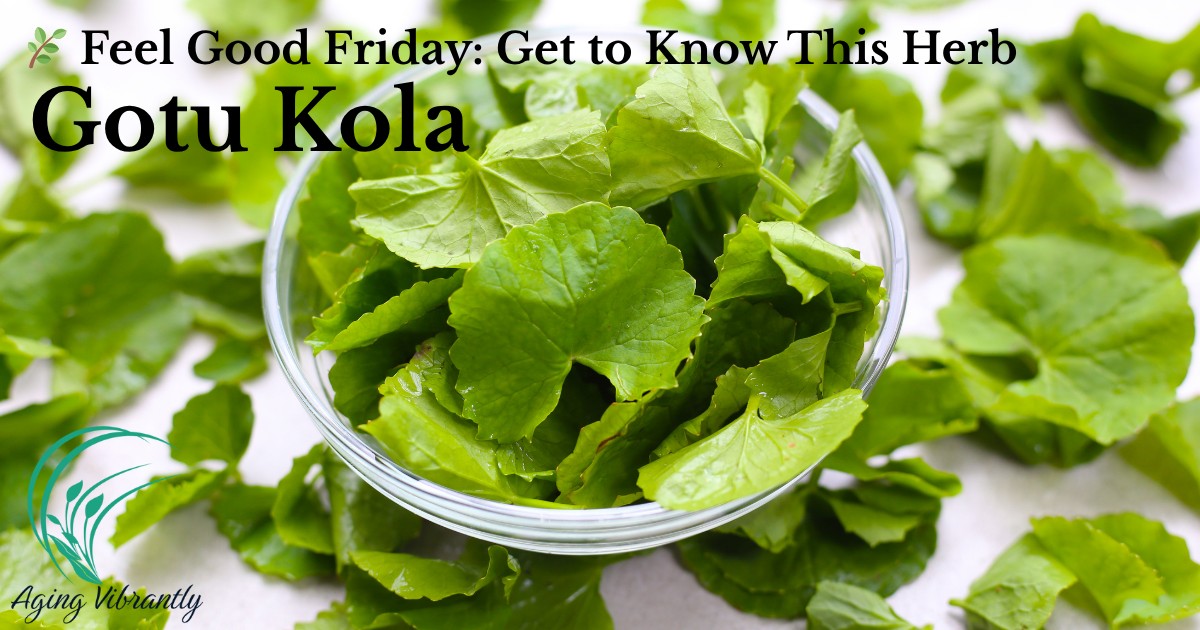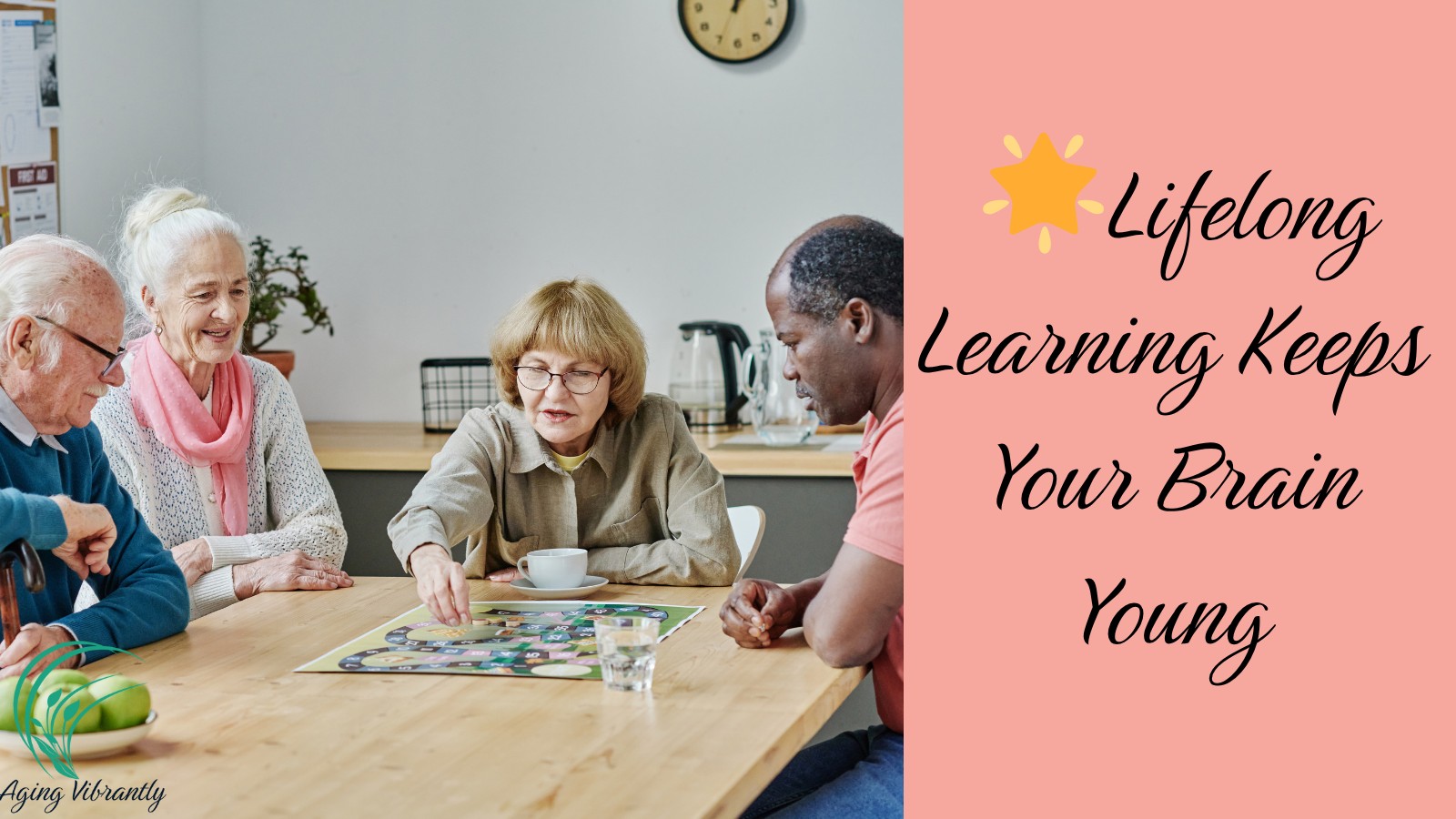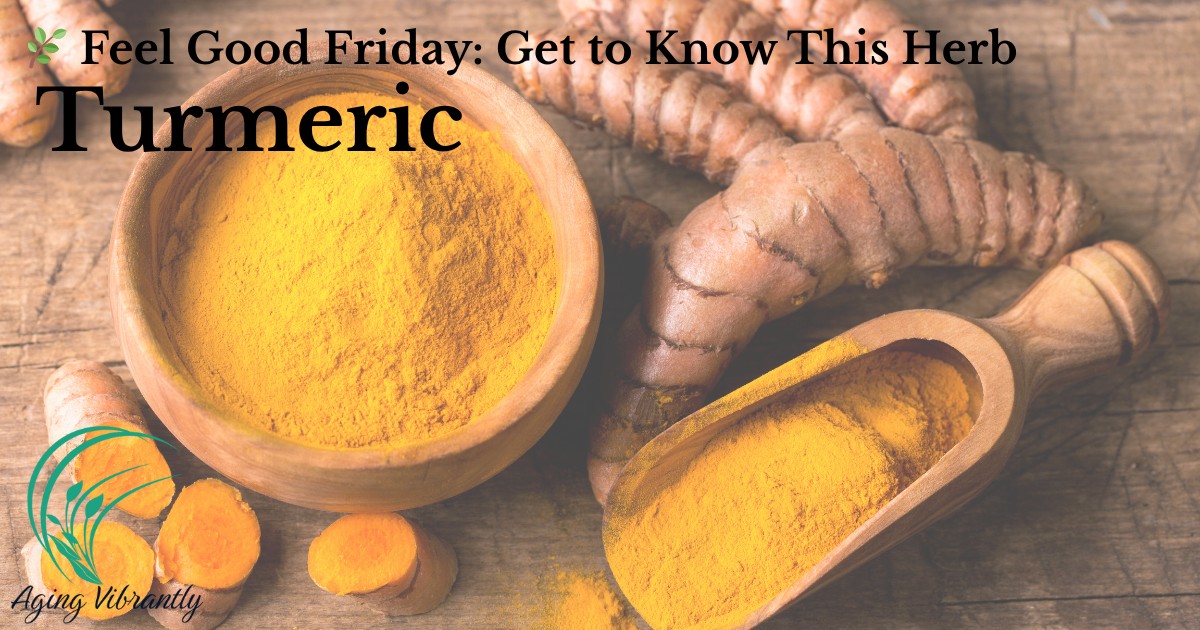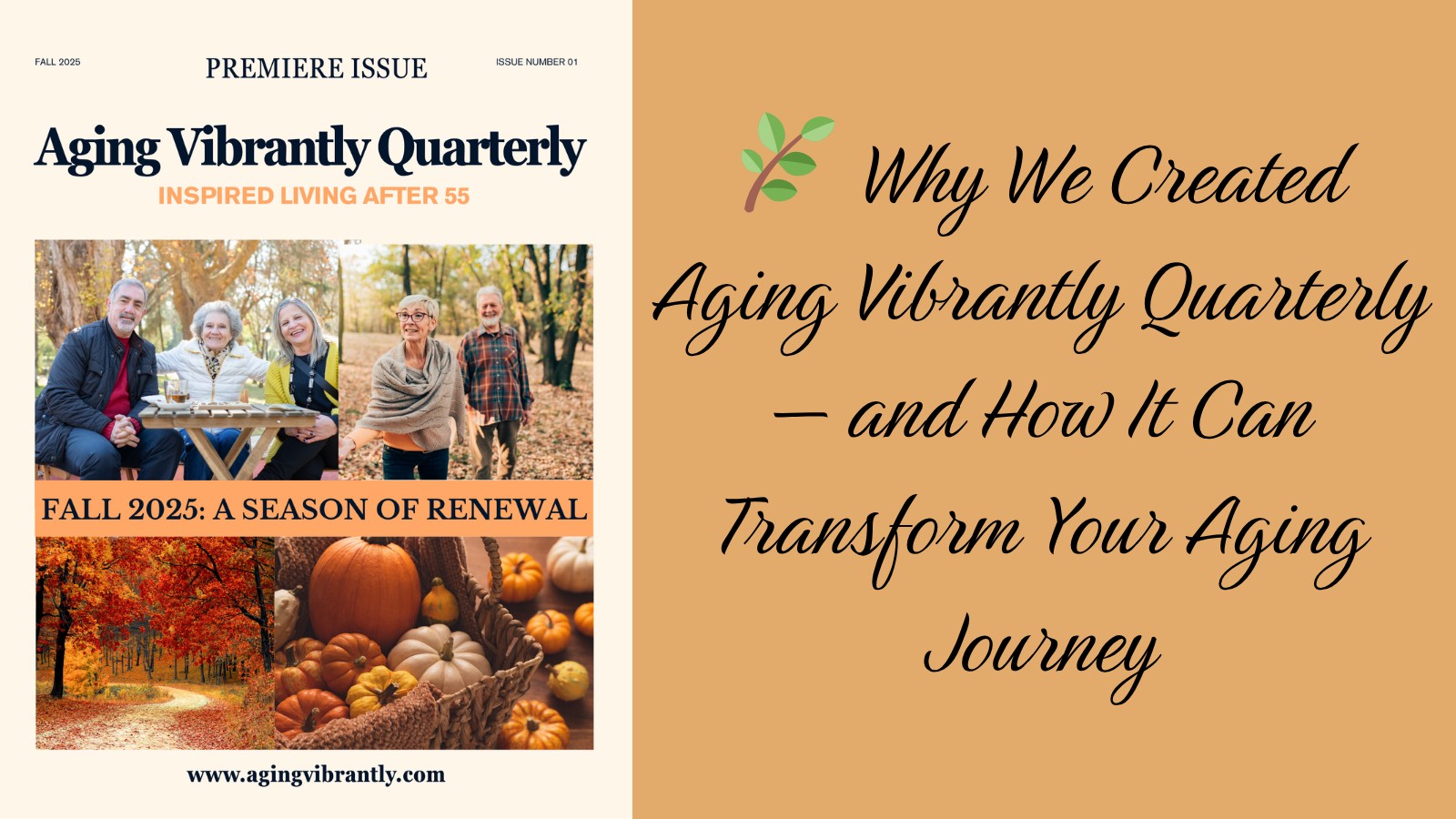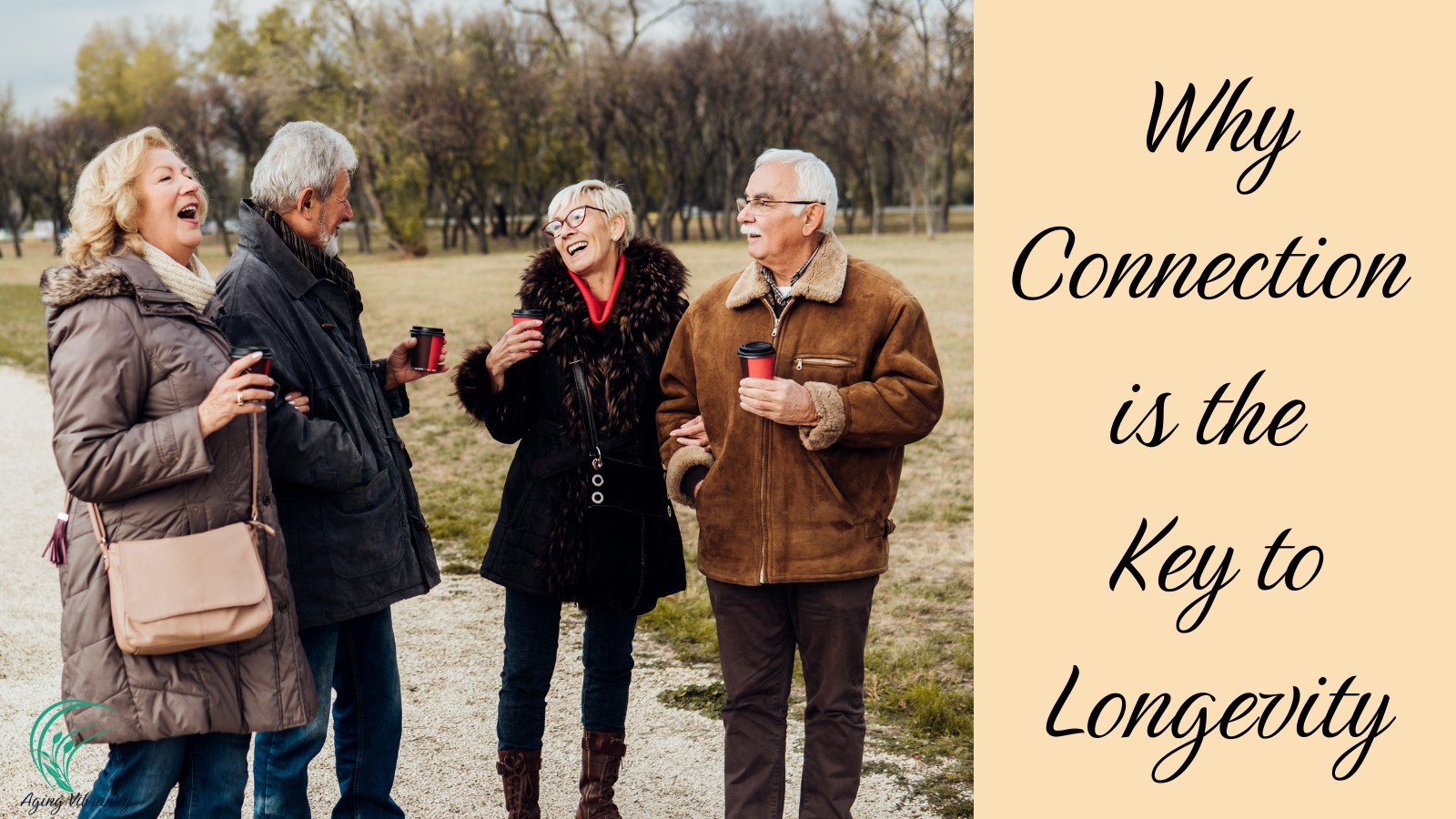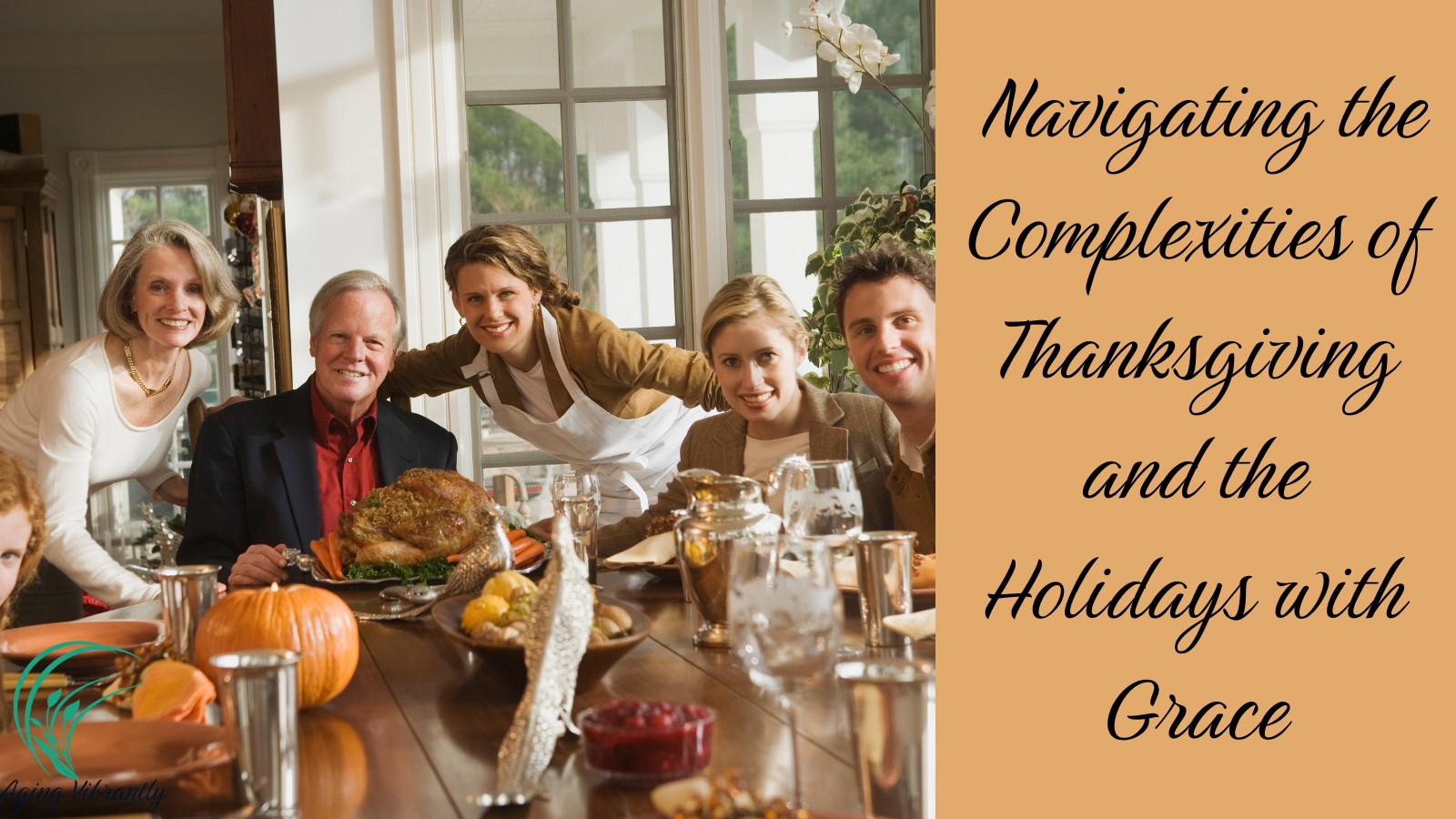
The holiday season arrives like a wave—beginning with Thanksgiving’s call to gratitude and continuing into weeks filled with gatherings, expectations, traditions, and emotions. For many, this season brings both beauty and heaviness. We long for peace-filled celebrations that honor Christ, yet we often find ourselves rushing, juggling schedules, navigating family tensions, or carrying grief. The good news is that Jesus meets us in the midst of it all. We don’t have to earn His presence; He comes near to us just as we are. “The Lord is near to the brokenhearted and saves the crushed in spirit” (Psalm 34:18).
🕯 Remembering the Heart of the Season
Thanksgiving reminds us to pause and reflect on God’s goodness, but that doesn’t mean forcing gratitude in difficult circumstances. Real thankfulness grows from recognizing God’s faithfulness in every season. “Give thanks to the Lord, for He is good; His steadfast love endures forever” (Psalm 107:1). As we transition into Advent and Christmas, we remember Emmanuel—“God with us” (Matthew 1:23). This truth steadies us even when our schedules feel overwhelming. The holidays are not about performing, impressing, or creating picture-perfect moments. They are about resting in the presence of Christ and welcoming His peace into our homes and hearts.
💛 Extending Grace to Yourself
One of the greatest gifts you can give yourself—and others—this season is grace. Let go of the pressure to do it all. You don’t have to attend every event, cook every dish, or meet every expectation. Jesus Himself often withdrew from the crowds to rest and pray (Luke 5:16). If the Son of God took time to breathe, you can too. Create space for reflection: What truly nourishes your soul? What drains your spirit? Saying “no” to hustle and “yes” to rest is not selfish—it is wise stewardship of your well-being. When your heart is at peace, you are freer to love others well.
🤝 Extending Grace to Others
Everyone around you carries unseen burdens—grief from losses, stress from responsibilities, or loneliness that surfaces during the holidays. When we approach others with empathy rather than expectation, relationships soften. Paul reminds us, “Be kind and compassionate to one another, forgiving each other, just as in Christ God forgave you” (Ephesians 4:32). Grace does not mean allowing unhealthy behavior or ignoring hurt, but it does mean choosing gentleness over reaction. Ask God to help you see others through His eyes, especially in moments of frustration.
🛡 Setting Healthy, Christ-Centered Boundaries
One of the most overlooked aspects of grace is the necessity of boundaries. Jesus modeled clear boundaries throughout His ministry—He walked away from crowds, said “no” when it was needed for His mission, and didn’t allow the expectations of others to control Him. Boundaries are not walls of rejection; they are gates of protection. They help you love others without losing yourself.
Here are some ways boundaries can look during the holidays:
- Limiting time at gatherings that trigger stress or conflict
- Communicating your needs with kindness and clarity
- Choosing not to participate in conversations or traditions that harm your emotional health
- Prioritizing time with God before engaging in difficult interactions
Proverbs 4:23 says, “Above all else, guard your heart, for everything you do flows from it.” Guarding your heart honors God and makes space for His peace. Boundaries allow you to show up with grace—fully present, fully grounded, and fully aligned with Christ’s love.
👪 Navigating Family Dynamics
Family gatherings can stir nostalgia and bring joy, but they can also surface old wounds or unspoken tensions. Preparing your heart in prayer is essential. Ask the Holy Spirit to help you respond with wisdom, patience, and humility. “If it is possible, as far as it depends on you, live at peace with everyone” (Romans 12:18). Peace may not be possible with every person or in every situation, but you can choose to carry peace with you. You are responsible for your own reactions, not for managing the emotions or behavior of others. Let Christ’s example—humble, patient, and anchored in love—guide your steps.
💔 When the Season Is Hard
For many, Thanksgiving and Christmas intensify emotions like grief, loneliness, or stress. Empty chairs at the table, beloved traditions that have changed, or relationships that feel distant can make the holidays bittersweet. You do not have to pretend that everything is okay. Jesus is close to those who are hurting. “Cast all your anxiety on Him because He cares for you” (1 Peter 5:7). Reach out to your church community, small group, or trusted friends. There is strength in connection and healing in companionship.
🙏 Practices for a Grace-Filled Holiday Season
Create simple rhythms that anchor you in Christ’s peace:
- Begin your mornings with Scripture or an Advent reflection.
- Use a breath prayer such as, “Jesus, bring Your peace.”
- End your day with gratitude, naming where you saw God at work.
- Look for opportunities to bless others—a phone call, a meal, an encouraging text, or a handwritten note.
Serving others gently and quietly becomes an act of worship that re-centers your heart on Christ.
🍂 A Thanksgiving Blessing for the Season Ahead
As you step into this holiday season, may Christ’s peace settle softly over your heart and your home. May gratitude rise not because everything is perfect, but because God is faithful in every circumstance. May His grace guide your steps—from Thanksgiving to Christmas and into the new year. And may you experience Emmanuel—God with you—bringing comfort, strength, and joy in every moment.
Grace has already come, wrapped in a Savior. You don’t have to navigate this season alone.
Enjoy your FREE Issue of Aging Vibrantly Quarterly Fall 2025
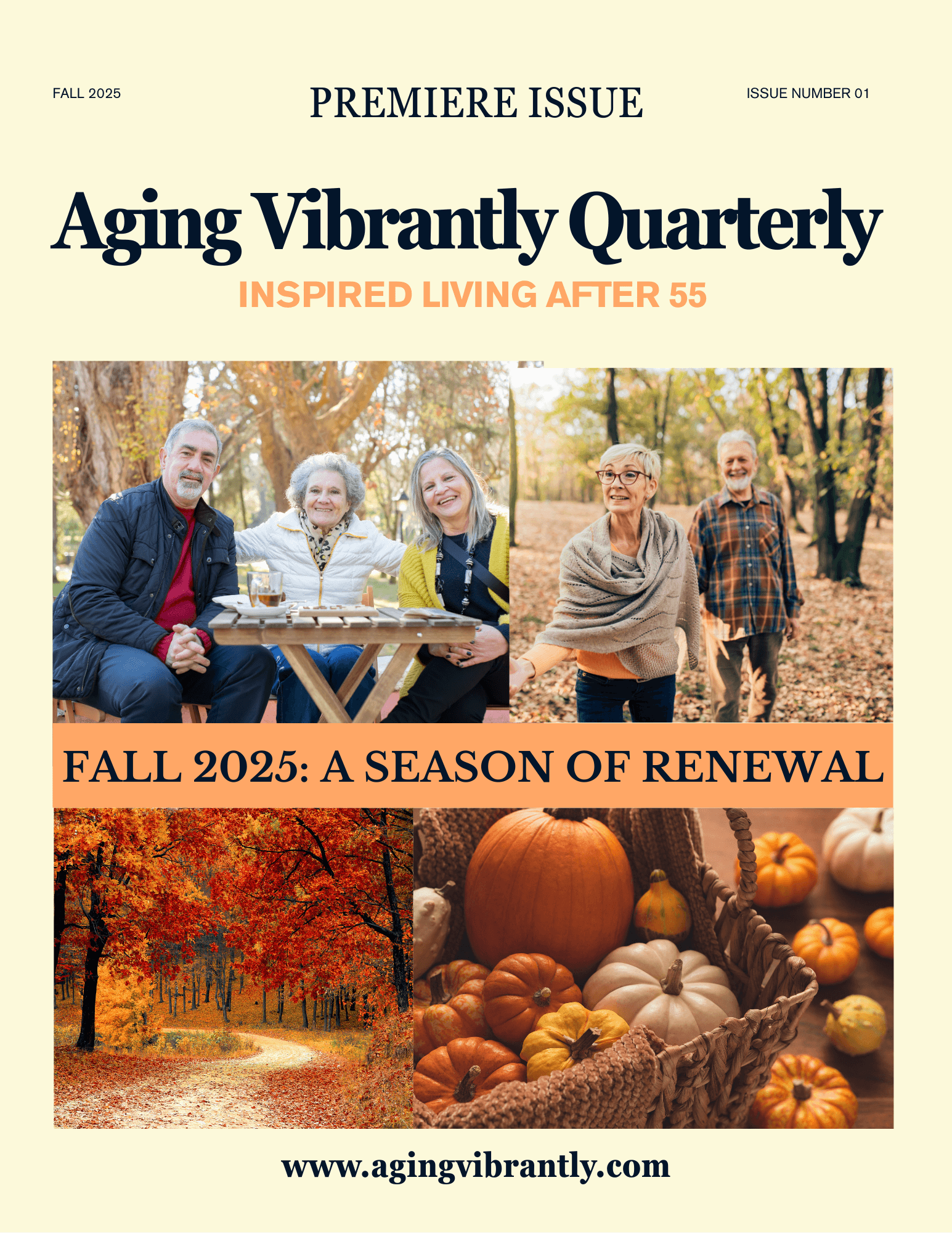

Please share your thoughts in the comments!
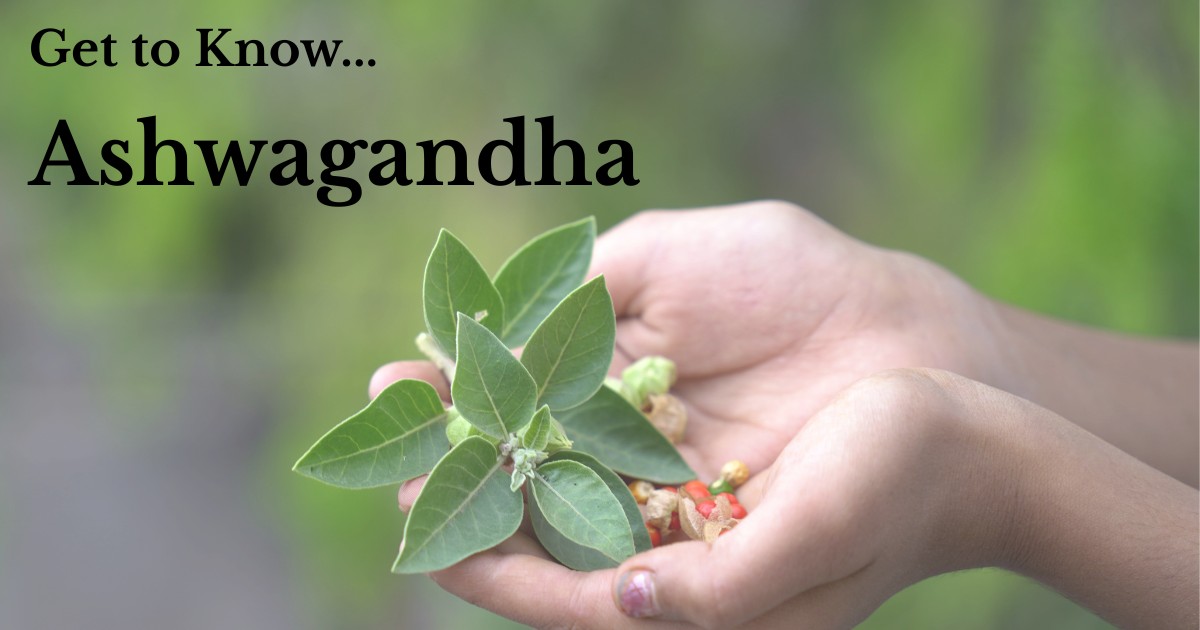
Welcome to our new Feel Good Friday series — a weekly spotlight on powerful herbs that help us age vibrantly and naturally! Each week, we’ll explore one healing plant, its unique benefits, and how it can support your whole-person wellness journey. 🌿
This week, we’re starting with one of nature’s most trusted stress-soothers — Ashwagandha, the calming adaptogen that helps restore balance, energy, and peace from the inside out. 💚
Disclaimer: The information shared in this series is for educational purposes only and is not intended to diagnose, treat, cure, or prevent any disease. Always consult with your healthcare provider before starting any new herbal supplement, especially if you are taking medications or have existing health conditions.
Ashwagandha (Withania somnifera) known as: Winter cherry, Indian ginseng
Family: Solanaceae
Parts used: Root
Native to: India and Africa
Family: Solanaceae
Parts used: Root
Native to: India and Africa
🌱 Botanical Snapshot
Ashwagandha is a small, perennial shrub that grows 2.5–5 feet tall, often thriving in dry, rocky soils and warm climates.
- Stem: Sturdy, with fine hairs that give it a slightly fuzzy appearance.
- Leaves: Simple, ovate, and arranged alternately along the stem—green with a velvety texture.
- Flowers: Small, greenish-yellow blooms that grow in clusters at the leaf axils.
- Fruit: Bright orange-red berries, smooth and enclosed in a papery calyx, similar in look to tiny ground cherries.
- Root: The most valued part—long, thick, and brown, with a strong, earthy odor. It contains key bioactive compounds such as withanolides and alkaloids that contribute to its adaptogenic and restorative effects.
Ashwagandha’s deep root system anchors it in arid soil and symbolizes its grounding nature—helping the body and mind find balance during stress.
🌍 Where It Grows
Native to India, Nepal, and parts of Africa and the Mediterranean. Organically cultivated sources are preferred due to sustainability concerns in parts of India.

🧪 Key Constituents
- Alkaloids (somniferine, withanine)
- Steroidal lactones (withanolides)
- Sitoindosides
- Iron
🌸 Traditional Background
Ashwagandha has been treasured for over 3,000 years in the Ayurvedic healing tradition of India, where it’s classified as a rasayana—a rejuvenating herb used to promote longevity, vitality, and resilience.
The Sanskrit name ashwagandha translates to “the smell of a horse,” symbolizing the strength, stamina, and vitality it is believed to impart. Ancient Ayurvedic texts describe it as a restorative for those who are exhausted, aging, or recovering from illness. It was commonly given to the weak, anxious, or overworked to restore balance between body, mind, and spirit.
Ashwagandha’s Latin name, Withania somnifera, means “sleep-inducing,” highlighting its unique combination of calming and energizing qualities. It nourishes the nervous system and adrenals, helping the body adapt to physical and emotional stress without causing overstimulation—a rare trait among adaptogens.
In traditional practice, it’s often blended with warm milk, honey, or ghee to enhance absorption and nourish the body deeply. This bedtime tonic was seen as a symbol of comfort and restoration, helping people wind down and rebuild from the day’s demands.
Ayurvedic healers also use ashwagandha to support reproductive vitality, enhance mental clarity, and strengthen immunity, viewing it as one of the most balancing herbs in the Ayurvedic pharmacopeia—suitable for nearly everyone, from the frail and elderly to those under chronic stress.
💪 Key Benefits
| Area | Benefit |
|---|---|
| Stress & Anxiety | Calms the nervous system, reduces anxiety, promotes restful sleep |
| Energy & Vitality | Builds stamina and strength over time without overstimulation |
| Cognitive Support | Improves concentration, focus, and mental clarity |
| Hormonal Balance | Supports fertility and reproductive health in men and women |
| Immune Health | Enhances immune function and resilience |
| Blood Sugar & Cholesterol | Shown to help lower glucose, LDL, and VLDL levels |
| Thyroid Function | May support underactive thyroid (use with caution in hyperthyroidism) |
💤 Unique Trait
Unlike many adaptogens, ashwagandha is both calming and restorative—ideal for stress-related fatigue, anxiety, and poor sleep.
⚠️ Cautions*
- Avoid during hyperthyroidism or while taking thyroid medications.
- Use under guidance during pregnancy.
- Not for those with iron overload conditions (like hemochromatosis).
☕ How to Use*
Traditionally taken as a powdered root mixed into warm milk (often with honey) before bedtime.
Typical Ayurvedic dose: 5 grams twice daily.
Typical Ayurvedic dose: 5 grams twice daily.
Try This at Home
Calming Ashwagandha Latte
- 1 cup warm almond or oat milk
- ½ tsp Ashwagandha powder
- ¼ tsp turmeric
- Pinch cinnamon
- 1 tsp honey (optional)
Whisk together and enjoy before bedtime.
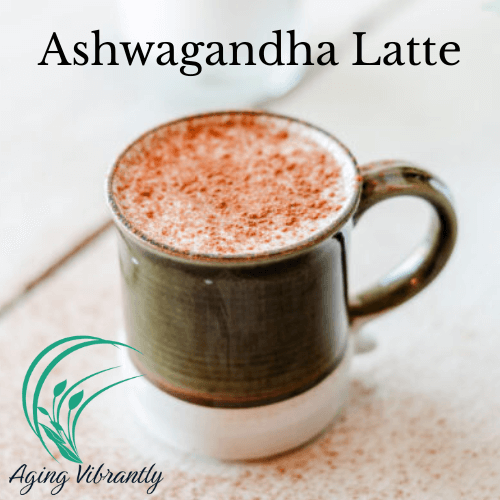
Closing Thought
Adding Ashwagandha to your wellness routine may help you stay calm, focused, and energized through life’s transitions. Remember—herbal wellness is a journey, not a quick fix. Start slowly, listen to your body, and celebrate the small steps toward vibrant aging.
*Aging Vibrantly provides educational, inspirational, and faith-based wellness content for older adults and caregivers. Our services are not a substitute for professional medical, legal, financial, or counseling advice.
💚 Want to Learn More?
Join us every "Feel Good Friday" and get to know another to benefit you as you Age Vibrantly!
Join us every "Feel Good Friday" and get to know another to benefit you as you Age Vibrantly!
Subscribe to Aging Vibrantly Quarterly for more about Holistic Wellness as You Age.
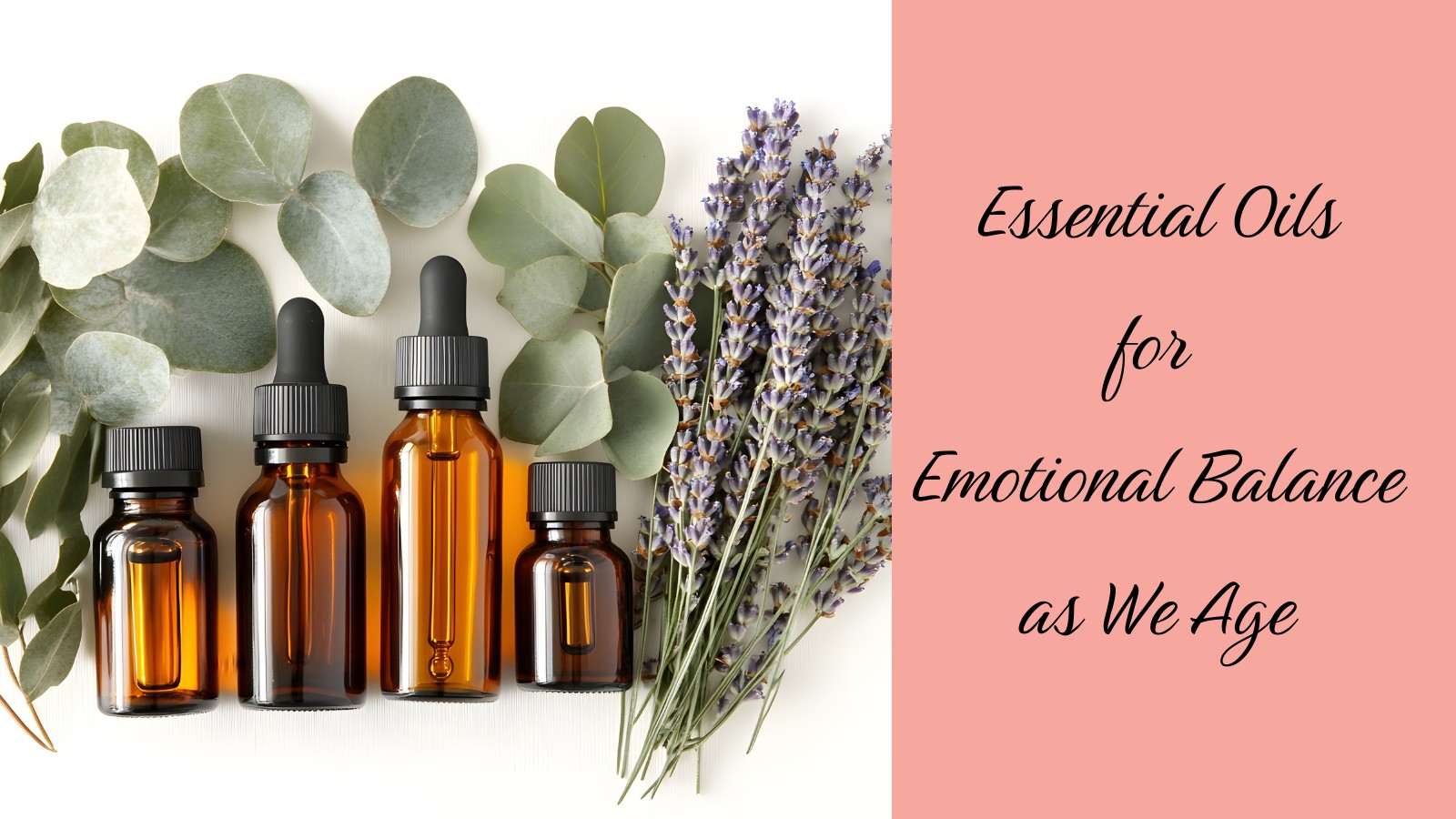
Aging is a season of growth and reflection — but also one of emotional shifts. We may experience new kinds of stress, loneliness, or anxiety as our lives and roles change. The beautiful truth is that creation provides natural tools to help us navigate these transitions. Essential oils are one of them — simple, powerful, and rooted in both science and Scripture.
🌸 Why Emotional Balance Matters as We Age*
As we age, our emotional health becomes just as important as our physical well-being. Many older adults experience changes that can stir up new emotions — retirement, loss of loved ones, physical changes, or shifting social circles. These transitions can sometimes lead to stress, anxiety, or sadness. Maintaining emotional balance as we age helps us stay resilient, connected, and hopeful through each new season of life.
🌿 The Mind-Body Connection
Emotions have a powerful impact on the body. When we experience ongoing stress or worry, our brains release cortisol and other stress hormones. Over time, high cortisol levels can lead to inflammation, poor sleep, high blood pressure, and even memory problems. Chronic stress can also weaken the immune system, making us more vulnerable to illness.
On the other hand, when we feel calm, joyful, and at peace, the body responds positively. Our heart rate slows, digestion improves, and immune function strengthens. Studies show that people who manage stress well tend to have lower rates of chronic disease and experience a better quality of life as they age.
💧 Emotional Wellness and Whole-Person Aging
Emotional balance is one of the key pillars of holistic aging. It supports the whole person — body, mind, and spirit. When we feel emotionally steady, we’re better able to make healthy choices, nurture relationships, and stay active in faith and community.
That’s why nurturing emotional health isn’t a luxury — it’s essential for vibrant living. Using natural tools like essential oils can make this easier. These aromatic plant compounds work with the brain’s emotional center to help ease tension, lift mood, and promote peace.
🕊️ A Faith-Based Perspective
God designed us as beautifully integrated beings. Our minds, bodies, and spirits are deeply connected. When one part is out of balance, the others feel the strain. Taking time to care for your emotional wellness honors that divine design. Practices like prayer, gratitude, community, and aromatherapy can work together to restore peace and purpose as we grow older.
🌞 Aging Vibrantly, Inside and Out
Aging vibrantly means living with joy, calm, and clarity — no matter your age. By caring for emotional balance through faith, connection, and natural wellness practices, we can thrive, not just survive, in our later years.
How Essential Oils Work on the Body and Mind
Essential oils aren’t just pleasant scents — they contain hundreds of natural compounds that interact with our brains and bodies. Here’s how they support emotional wellness:
1. Through the Limbic System (Your Emotional Brain)
When you inhale an essential oil, its molecules travel through the nose to the olfactory bulb, which connects directly to the limbic system — the part of your brain that regulates emotion, memory, and motivation.
- Lavender and bergamot, for example, influence neurotransmitters like serotonin and dopamine, which help stabilize mood.
- This fast, direct connection is why certain aromas can instantly calm your nerves or trigger joyful memories.
2. By Supporting the Nervous System
Essential oils contain terpenes and esters, natural compounds known to have relaxing effects on the nervous system.
- Linalool (found in lavender) and linalyl acetate (found in bergamot) have been shown to lower heart rate and blood pressure in stressful situations.
- Oils like frankincense can reduce cortisol levels, helping the body move from “fight or flight” into a state of rest and restoration.
3. By Balancing Hormones Naturally
As we age, hormonal changes can influence emotional stability. Certain essential oils help the body rebalance naturally:
- Clary sage may support estrogen balance, easing irritability and mood swings.
- Ylang ylang can promote calm and reduce stress-induced tension.
4. By Encouraging Mindful, Faith-Based Practices
Using essential oils intentionally — during prayer, meditation, or deep breathing — encourages mindfulness. This slows racing thoughts, centers your focus on God, and helps you remain present. Over time, these small rituals strengthen emotional resilience.
Top Essential Oils for Emotional Balance
| Essential Oil | Key Benefit | Best Use |
|---|---|---|
| Lavender | Calms anxiety, promotes rest | Diffuse before bed or add to a bath |
| Bergamot | Lifts mood, eases tension | Inhale during moments of stress |
| Frankincense | Grounds the mind, supports spiritual focus | Use in prayer or meditation |
| Ylang Ylang | Soothes frustration and tension | Apply (diluted) to wrists or neck |
| Rose | Comforts sadness, promotes love and compassion | Diffuse during quiet reflection |
| Clary Sage | Balances hormones, reduces irritability | Blend with carrier oil and apply topically |
Each of these oils are available here. Please understand that this a link to an affiliate and may result in a small income for Aging Vibrantly. Your cost is not affected in any way.
How to Use Essential Oils Safely and Effectively
- Inhale: Add 4–6 drops to a diffuser or place a drop on a tissue and breathe deeply.
- Topical: Mix 2–3 drops with a carrier oil (like jojoba or fractionated coconut oil) before applying to skin.
- Bath or Massage: Combine 3 drops of oil with Epsom salts or carrier oil for soothing relaxation.
- Faith Time: Diffuse frankincense or rose during devotion, journaling, or prayer for emotional grounding.
Always use pure, therapeutic-grade oils, and check with your healthcare provider if you take medications.
The Faith and Creation Connection
Essential oils are part of God’s intricate design — the aromatic essence that protects plants and blesses us with healing properties. When we use them with gratitude and intention, we participate in that divine rhythm of restoration. Each breath reminds us: peace and healing are gifts available to us daily.
Final Thoughts
Essential oils offer a remarkable bridge between body, mind, and spirit. They work with the brain’s emotional center, calm the nervous system, and create sacred moments of stillness. Whether you’re diffusing lavender to relax, inhaling bergamot to lift your mood, or praying with frankincense, these natural tools invite balance and joy into the aging journey.
Because aging vibrantly means caring for every part of who we are — body, mind, and soul.
Find out more about Emotional Resilience HERE
Please leave your Comments below about how Essential Oils have benefited you!
*All statements in this article are meant for educational purposes, not medical. Please consult your medical doctor before undertaking any suggestions in this article.
